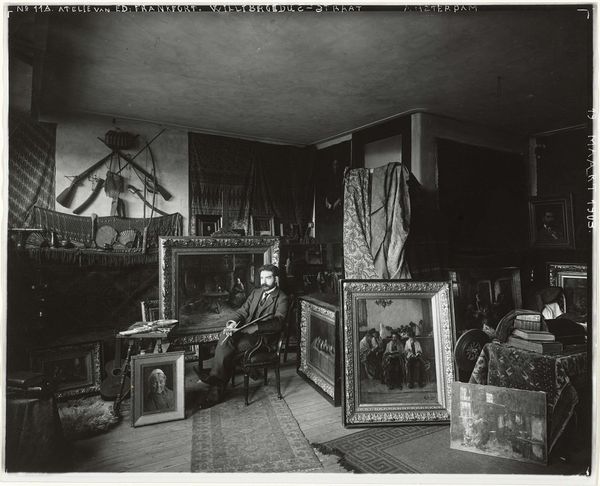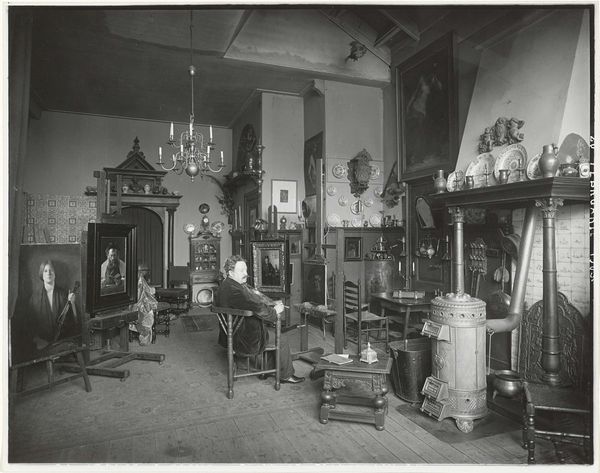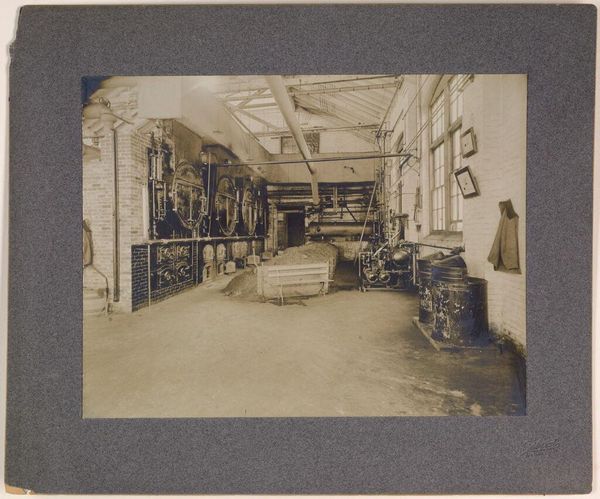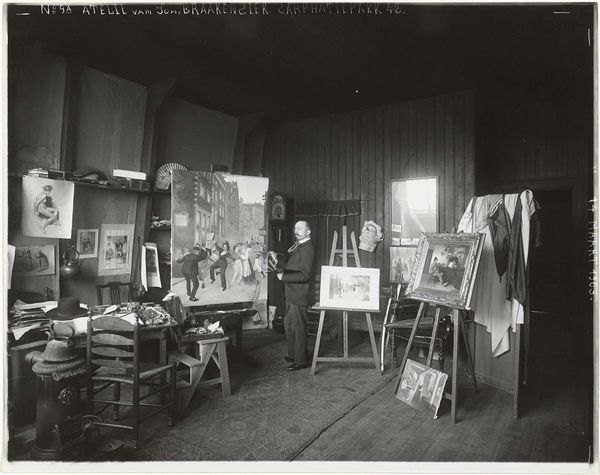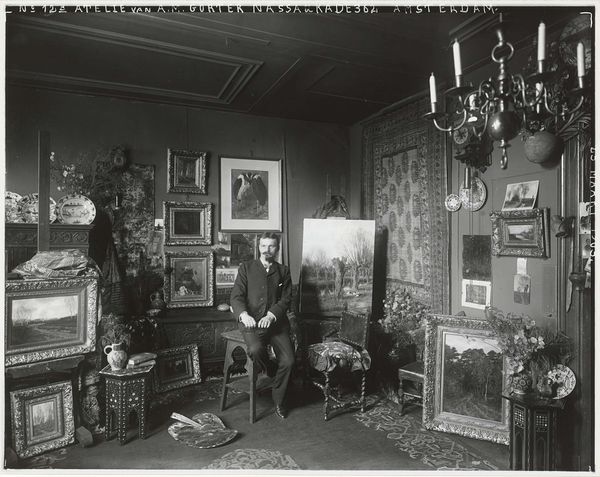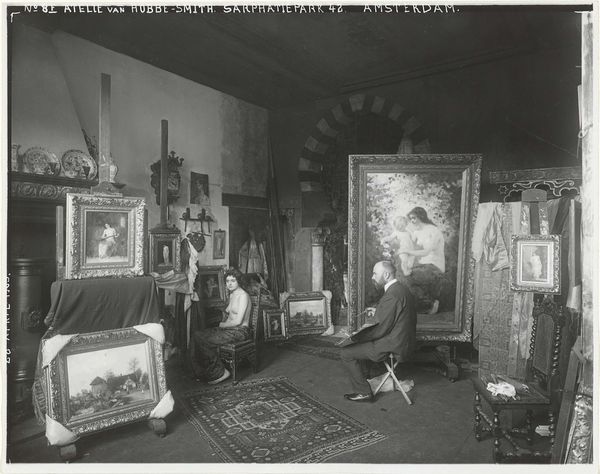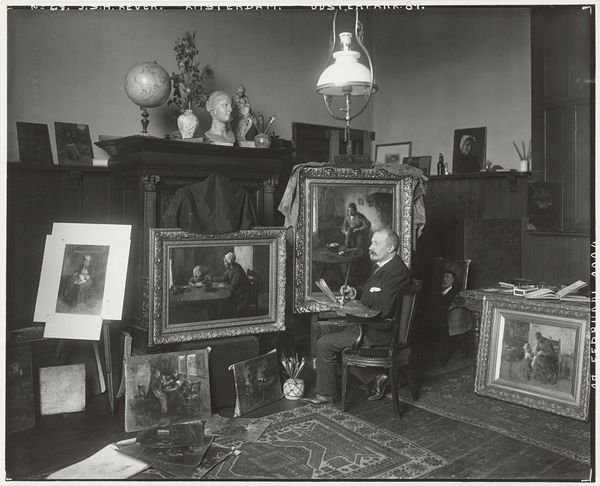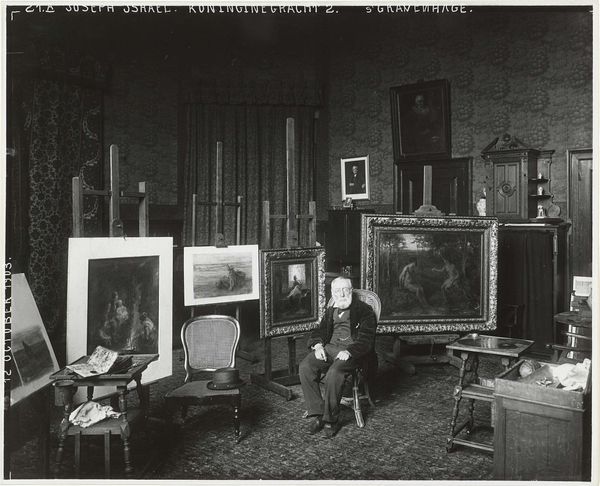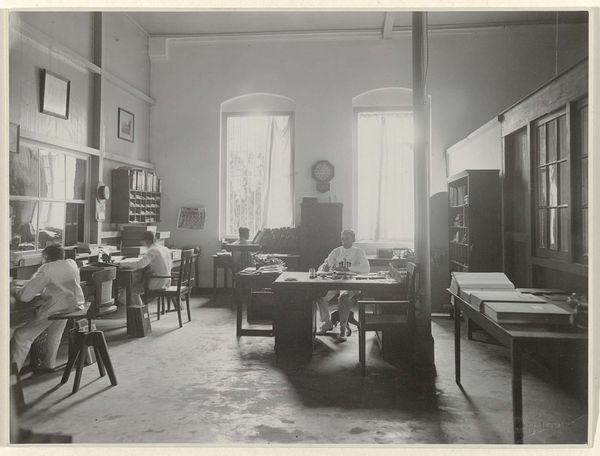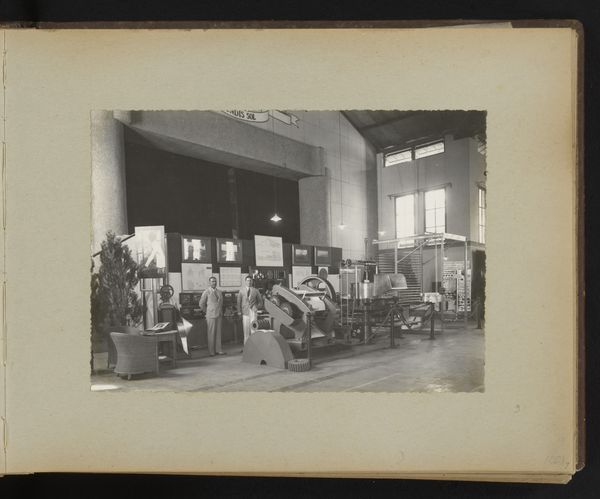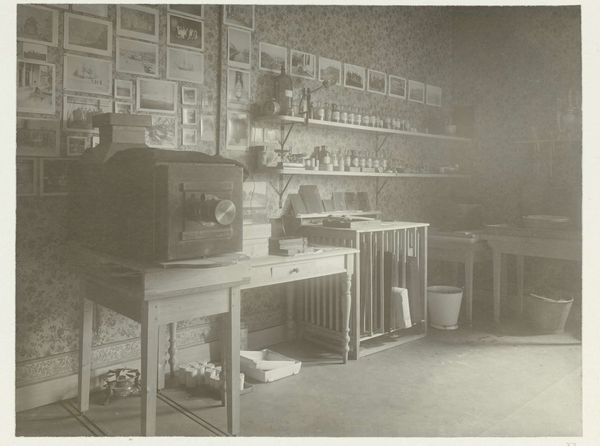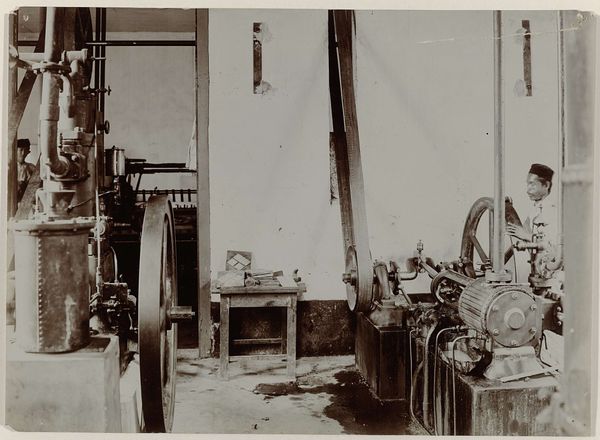
Isaac Israëls in zijn atelier aan het Oosterpark 82 in Amsterdam Possibly 1903 - 1946
0:00
0:00
Dimensions: height 244 mm, width 303 mm
Copyright: Rijks Museum: Open Domain
Curator: Here we see "Isaac Israëls in zijn atelier aan het Oosterpark 82 in Amsterdam", a gelatin silver print, most likely taken sometime between 1903 and 1946. The photograph captures a cluttered studio scene, dominated by canvases and the presence of the artist himself. Editor: Immediately, I'm drawn to the textures—the rough surfaces of the canvases, the polished wood floor, even the soft fabric of Israëls’s suit. It’s a tactile image, even in its monochromatic rendering, really emphasizes the environment of creative labour. Curator: Precisely. Consider the materiality evident here. The print medium itself, gelatin silver, became a dominant force in photography during this period, facilitating mass production and distribution of images. It's not just a record; it’s a material artifact deeply embedded in the history of photographic technology and its dissemination. And look how many paintings! Each one is not just an image but an object that has taken work to create. Editor: Absolutely, and it’s within the institutional context of the studio itself where Israëls cultivates his persona. Think about the social and cultural significance: a space both private for creation and yet also a carefully curated image meant for public consumption, even posterity. It presents an artist deeply intertwined within Amsterdam's artistic circles. Curator: Indeed, the photographic reproduction allows this space, the labor, and, implicitly, the artist's works, to become more accessible. The black and white format makes a visual record about an environment; the photograph democratizing both artist and art-making. How does that alter the commodity value tied to singular artworks versus mass reproductions? Editor: The mass reproduction opens up access while still enshrining artistic genius by documenting and showcasing the artist's workspace, furthering his persona. Museums, galleries, all operate in such interplay—between making the exclusive more public, accessible—yet always reinforcing notions of "art" versus "craft" depending on how things get presented and circulated. Curator: Good point. This photo, as a document of production, can almost flatten traditional hierarchies by foregrounding the materials of making as much as the artistic "genius." It lets us value production over solely aesthetic result. Editor: Perhaps… In the end, it reflects more than a record of production; this space served as stage. This photographic choice solidified a narrative about Isaac Israëls, about artistry, the individual in community. That feels poignant today. Curator: I'll consider the implications on materiality and labor in our discussions going forward. Editor: As will I. This glimpse helps reflect how artistry is constructed and curated by both creators and institutions.
Comments
No comments
Be the first to comment and join the conversation on the ultimate creative platform.
